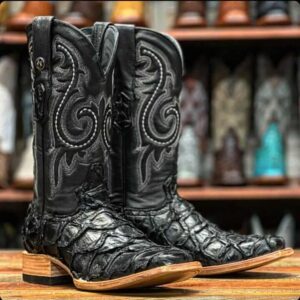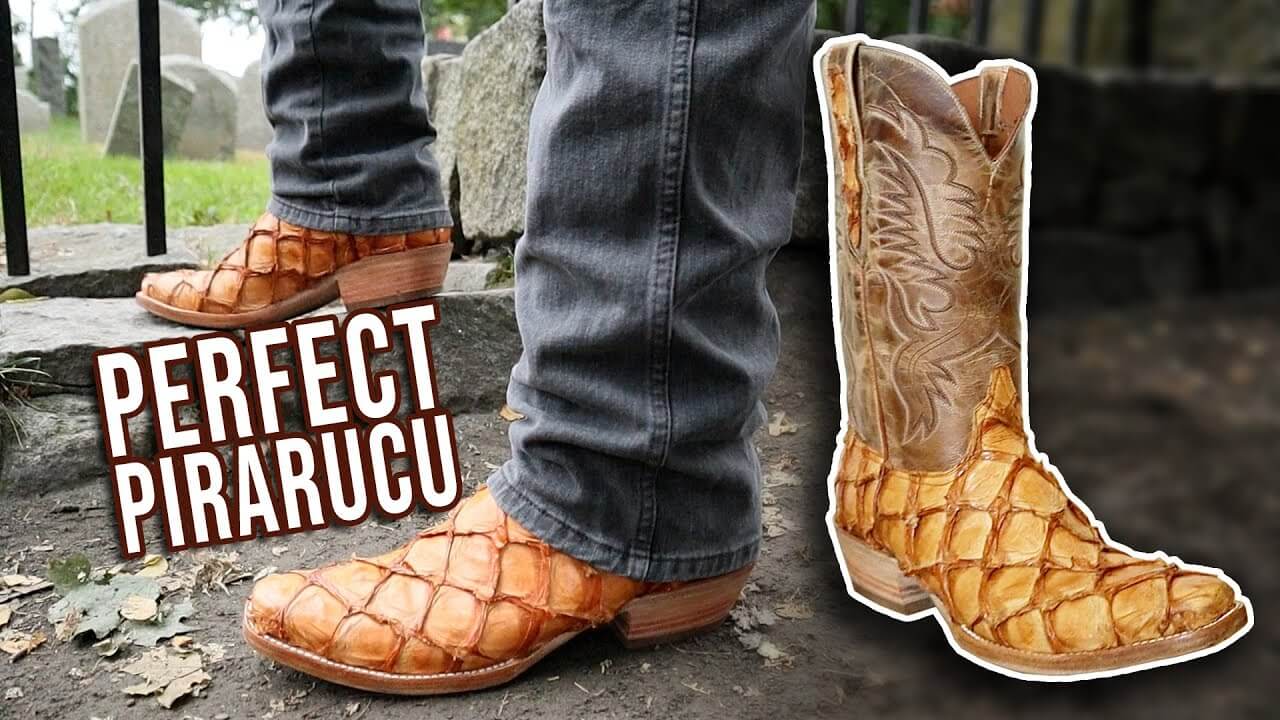In recent years, fish boots have gained attention for their unique texture, sustainable material, and high-end craftsmanship. However, many shoppers wonder why fish skin boots often cost more than traditional leather footwear. The answer lies in the combination of rare materials, detailed craftsmanship, and durability that sets these boots apart from regular leather or synthetic options.
Below, we’ll explore in detail the main reasons why fish leather boots come with a higher price tag – and why they’re worth every dollar.
Why Are Fish Boots So Expensive?
1. The Rarity of Fish Leather
Unlike cowhide or synthetic materials, fish leather is not produced on a massive scale. It comes from specific species such as pirarucu, salmon, tilapia, and perch, each offering a distinctive pattern and texture. The most sought-after variety, pirarucu fish boots, are made from one of the largest freshwater fish in the Amazon.

Because fish leather production is still a niche industry, the supply is limited. Each skin must be carefully treated and processed, which increases production costs. This rarity adds to the exclusivity – and price – of genuine fish skin boots.
2. Complex and Labor-Intensive Tanning Process
The tanning of fish leather is far more complicated than traditional leather. Unlike cowhide, fish skin is thinner and must be treated gently to preserve its natural scales and unique grain pattern. The process involves multiple steps of cleaning, drying, and tanning – all performed by experienced artisans.
This precision ensures that the final fish leather boots are soft, flexible, and strong while maintaining their signature scale pattern. Each pair takes longer to make than a regular pair of leather boots, which is why handmade fish boots are often priced higher.
3. Sustainable and Eco-Friendly Material
Another reason fish boots are more expensive is sustainability. Most fish skin leather is sourced as a byproduct of the food industry, meaning no fish are caught solely for their hides. This makes fish leather boots an eco-friendly alternative to traditional animal leather.
Producing fish skin boots requires less water and fewer chemicals compared to cowhide tanning. The environmentally conscious production adds value and appeals to those who prefer sustainable fish boots made with minimal impact on the planet.
4. Handmade Craftsmanship and Attention to Detail
Every pair of fish skin boots is made by skilled craftsmen who understand the intricacies of working with exotic leathers. Unlike mass-produced footwear, these boots are handmade with attention to every stitch, cut, and finish.
From the moment the fish skin is prepared to the final polish, each step demands care and experience. This level of craftsmanship not only enhances durability but also ensures that every pair of fish boots has a distinct, one-of-a-kind look.
5. Unique Appearance and Natural Texture
No two pairs of fish leather boots are identical. Each fish skin has a natural variation in its scale pattern and texture, giving the boots a unique, high-end appeal. The look of fish skin boots cannot be replicated by artificial materials, making them a preferred choice for customers who value individuality.
Whether it’s men’s fish boots or women’s fish boots, the surface catches the light beautifully and adds a subtle sheen that makes them stand out from traditional leather boots.
6. Long-Lasting Durability
Despite its delicate appearance, fish leather is incredibly strong, often stronger than cowhide of the same thickness. Pirarucu fish boots, in particular, are known for their thick and flexible leather that withstands years of wear without losing shape.
Because of this durability, fish skin boots often outlast conventional footwear. When cared for properly, they retain their color, texture, and flexibility, making them a long-term investment rather than a short-term purchase.
7. Limited Production and Artisan Brands
Most fish boots are produced in small batches by boutique brands or specialized workshops, not large factories. This limited production helps maintain quality but also contributes to the higher price.
Each artisan brand sources genuine fish skin leather, ensures proper tanning, and constructs each boot by hand, leading to a premium product that’s more valuable than mass-market alternatives. This exclusivity adds to the luxury perception and cost of fish leather boots.
8. Ethical and Responsible Sourcing
Ethical sourcing plays a major role in the pricing of fish boots. Many manufacturers work with sustainable fisheries and local communities to obtain the skins responsibly. By doing so, they support environmentally safe practices while helping local economies thrive.
Customers who buy genuine fish skin boots aren’t just purchasing footwear, they’re supporting ethical fashion and contributing to a circular economy.
9. Comfort and Fit
High-quality fish boots are known for their comfort. The natural elasticity of fish skin leather allows it to adapt to your foot shape, providing a snug, comfortable fit. Combined with soft insoles, sturdy rubber outsoles, and breathable linings, fish boots can be worn all day without discomfort.
This blend of durability and comfort adds value to every pair, further explaining the higher price point.
10. A Long-Term Investment in Quality
Buying fish leather boots isn’t just about owning stylish footwear, it’s an investment in craftsmanship and longevity. These boots can last for years with minimal maintenance, aging beautifully over time. For many, the cost reflects the premium materials, the skill required to make them, and the sustainability behind their creation.
When compared to cheaper synthetic boots that wear out quickly, fish boots offer better value over the long term.
Final Thoughts
So, why are fish boots so expensive? It’s not just about rarity, it’s about quality, sustainability, and artistry. From the intricate tanning process to the handmade craftsmanship, every pair of fish skin boots represents hours of skilled labor and a commitment to excellence.
When you purchase genuine fish leather boots, you’re not only buying footwear, you’re investing in something that’s built to last, environmentally responsible, and truly unique.

